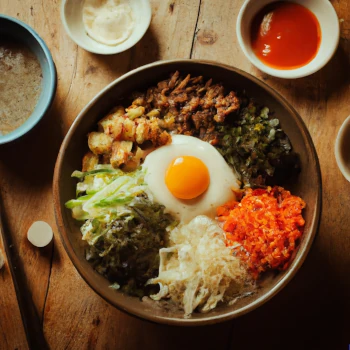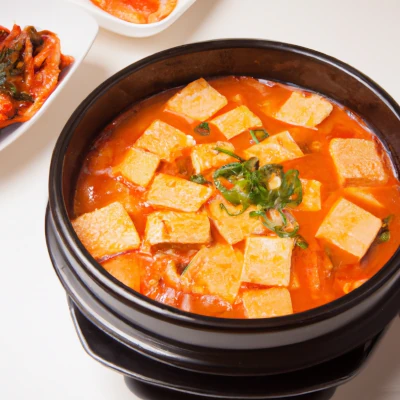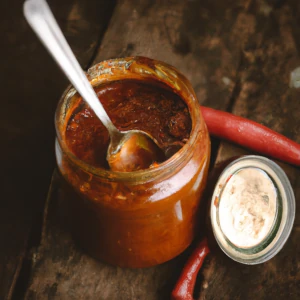Bibimbap (비빔밥)

Bibimbap (비빔밥) is a vibrant and flavorful dish that's a staple in Korean cuisine. This delightful dish features a colorful array of vegetables, meat, and a fried egg, all served over a bed of steamed rice. Whether you're looking for a hearty lunch, a simple dinner, or a delicious starter, Bibimbap is sure to satisfy.
What makes Bibimbap so special is its versatility. You can easily customize the dish to suit your taste. Feel free to add your favorite vegetables or swap the beef for chicken, tofu, or even seafood. And don't forget the Bibimbap sauce – a spicy and flavorful condiment that brings all the elements of the dish together.

Ingredients
100g / 3.5 ounces beef mince (or other cuts) 1 tablespoon soy sauce 1 tablespoon sesame oil 1 teaspoon sugar – I used brown sugar 1⁄4 tsp minced garlic 250g (0.6 pounds) mildly seasoned spinach 350g (0.8 pounds) mildly seasoned bean sprouts 100g (3.5 ounces) shiitake mushroom 120g (4.2 ounces) carrots (1 small) 1⁄2 tsp fine sea salt (1/4 tsp each will be used when cooking shiitake mushroom and carrots) 3 to 4 serving portions of steamed rice 3 or 4 eggs (depending on the serving portion) Some cooking oil to cook the meat, mushroom, carrots and eggs – I used rice bran oil. Korean seasoned seaweed, shredded (long thin cut) 2 tablespoons gochujang 1 tablespoon sesame oil 1 tablespoon sugar – I used raw sugar 1 tablespoon water 1 tablespoon roasted sesame seeds 1 teaspoon vinegar – I used apple vinegar 1 teaspoon minced garlic
Method
- 1. Begin by preparing the meat. Mix the beef mince with soy sauce, sesame oil, sugar, and minced garlic. Let it marinate while you prepare the other ingredients.
- 2. Next, prepare the vegetables. Season the spinach and bean sprouts mildly. Slice the shiitake mushrooms and carrots, then cook them separately with a bit of oil and a sprinkle of fine sea salt.
- 3. In a pan, cook the marinated meat until it's fully cooked. In the same pan, fry the eggs to your liking.
- 4. For the Bibimbap sauce, mix gochujang, sesame oil, sugar, water, roasted sesame seeds, vinegar, and minced garlic.
- 5. To assemble the Bibimbap, place a serving portion of steamed rice in a bowl. Arrange the prepared meat, vegetables, and a fried egg on top of the rice. Sprinkle some shredded Korean seasoned seaweed over the dish. Serve the Bibimbap sauce separately or drizzle it over the dish before eating.

Make it a Meal
-

Dwenjang Jjigae (된장찌개)
South Korea's favorite comfort food is a testament to rich, savory flavors from simple ingredients. This robust and hearty stew has been a beloved staple for centuries, passed down from generation to generation.
-

Homemade Gochujang (고추장)
Homemade Gochujang (고추장) is a spicy Korean chili paste made from glutinous rice, fermented soybeans, and red chili pepper flakes. Perfect for adding flavor and kick to Korean dishes like bibimbap, marinating meats, or enhancing soups.
Enjoying Bibimbap
Bibimbap, a traditional Korean dish, has a rich history and background that dates back to the Joseon Dynasty (1392-1897). It was originally known as "goldongban," which translates to "rice mixed with various ingredients." The dish was typically served on the eve of the lunar new year as a way for people to get rid of all the leftover side dishes before the new year. The name "bibimbap" was adopted later, and it means "mixed rice."
You may notice different spellings of bibimbap when searching for recipes or menus. Variations like bimbimbap, bibimbop, bi bim bop, or bibimap all refer to the same beloved Korean dish. These differences come from the way Korean sounds are transliterated into English, and there’s no single "correct" spelling. No matter how it’s written, it’s the same delicious mix of rice, vegetables, and flavorful toppings!
Bibimbap is deeply rooted in the Korean philosophy of balance and harmony. The dish is a perfect blend of different colors, flavors, and textures, representing the five elements of the universe: wood, fire, earth, metal, and water. Each ingredient in Bibimbap has a symbolic meaning. For example, the red chili pepper paste represents fire and passion, while the yellow egg yolk symbolizes earth and life.
In terms of health benefits, Bibimbap is a balanced meal that provides a variety of nutrients. The dish is packed with protein from the meat and egg, fiber from the vegetables, and carbohydrates from the rice. The assortment of vegetables also provides a wide range of vitamins and minerals. Moreover, the spicy chili pepper paste, known as gochujang, contains capsaicin, which has been linked to weight loss and improved cardiovascular health.
Bibimbap is not just a dish; it's a culinary experience that allows you to enjoy a variety of flavors and textures in one bowl. It's a testament to the creativity and resourcefulness of Korean cuisine, turning leftover side dishes into a delicious and nutritious meal. Whether you're a fan of Korean food or just discovering it, Bibimbap is a dish that's worth trying.
Tips, Tricks, and Serving Suggestions
Creating a perfect bowl of Bibimbap, a Korean culinary gem, is an art that requires a blend of traditional techniques and personal touches. Here are some unique tips and tricks to elevate your Bibimbap experience:
- Perfecting the Rice: The foundation of a good Bibimbap is well-cooked rice. Sushi rice is often preferred for its ability to crisp up nicely, adding a delightful crunch to the dish. However, feel free to experiment with other varieties to suit your taste.
- Vegetable Variety: Bibimbap is a celebration of vegetables. While traditional recipes call for spinach, bean sprouts, and shiitake mushrooms, don't hesitate to incorporate your favorite veggies. Asparagus, green beans, and broccolini can add a fresh twist to your Bibimbap.
- Protein Selection: While marinated beef is a classic choice, Bibimbap is versatile when it comes to protein. Consider chicken, pork, tofu, or even seafood. The key is to ensure the protein is well-cooked and flavorful.
- Sauce It Up: The Bibimbap sauce, a blend of gochujang, sugar, water, roasted sesame seeds, vinegar, and minced garlic, is the heart of this dish. Adjust the proportions to suit your palate, and don't shy away from adding a bit more gochujang for that extra kick!
- Assemble with Aesthetics: The beauty of Bibimbap lies in its vibrant presentation. Arrange the vegetables and protein on the rice in a visually pleasing manner. Remember, we eat with our eyes first!
- Embrace the Mix: Bibimbap literally means 'mixed rice'. So, once served, mix all the ingredients together. Each bite should be a symphony of the dish's diverse flavors and textures.
With these tips and tricks, you're well on your way to mastering the art of Bibimbap. Remember, the best Bibimbap is the one that caters to your taste buds. So, don't be afraid to experiment and make this dish your own!